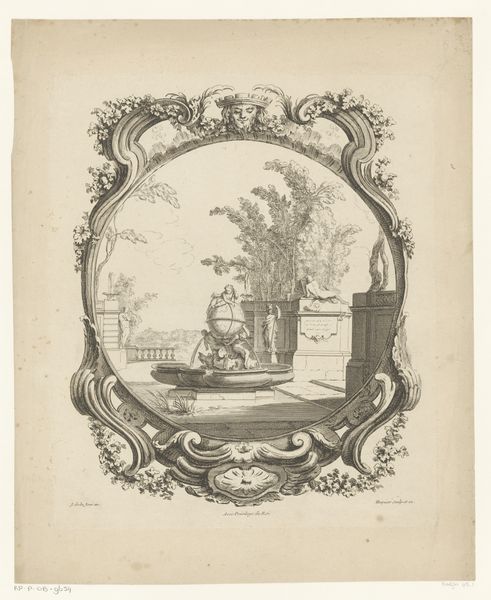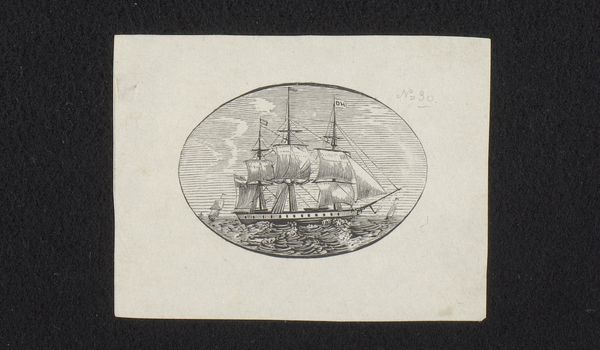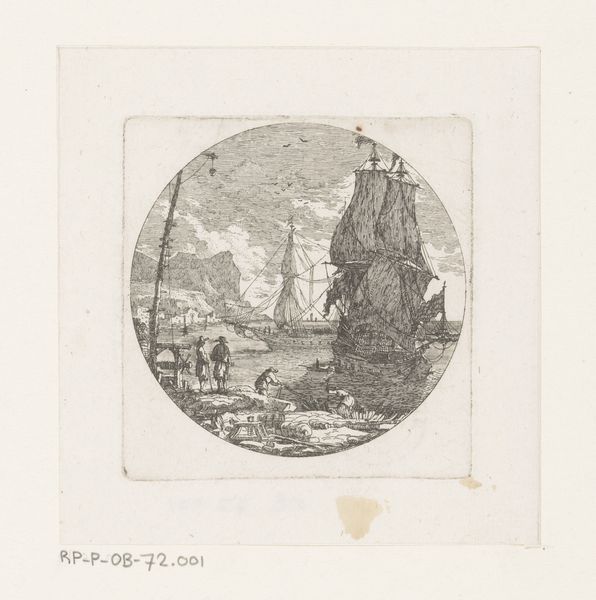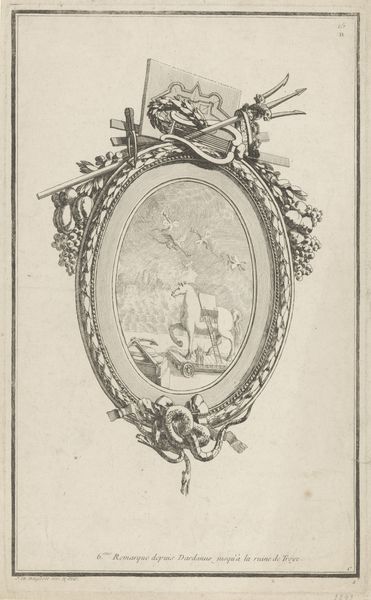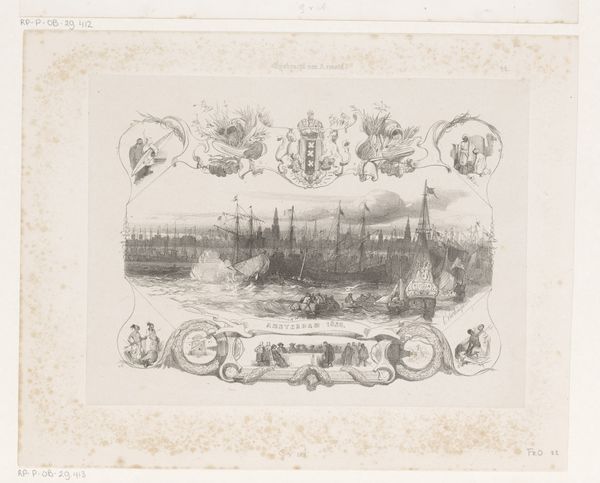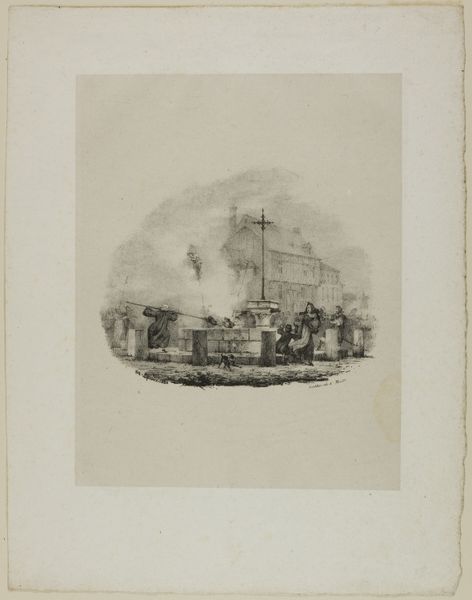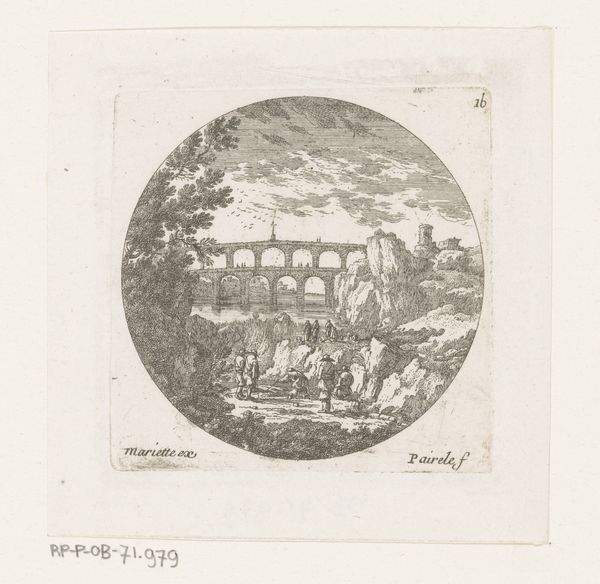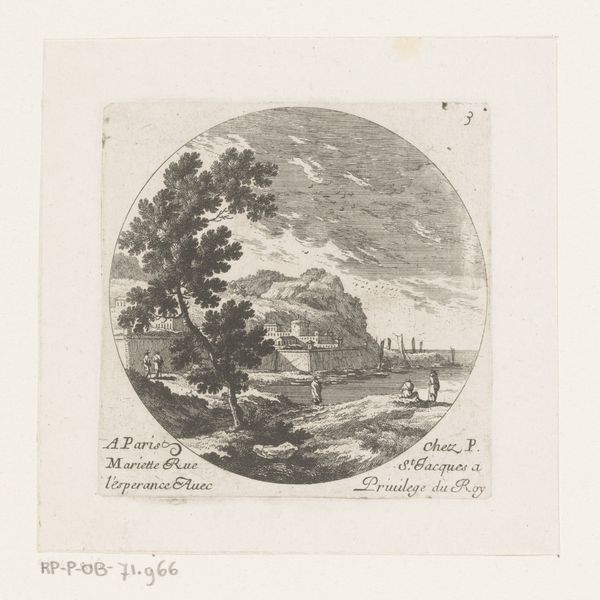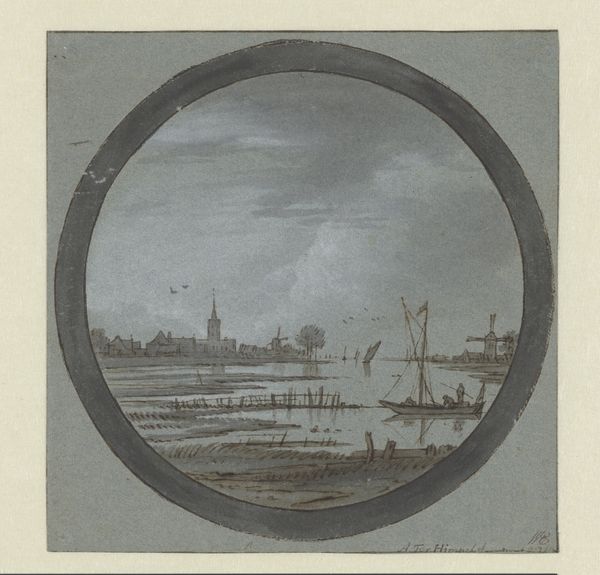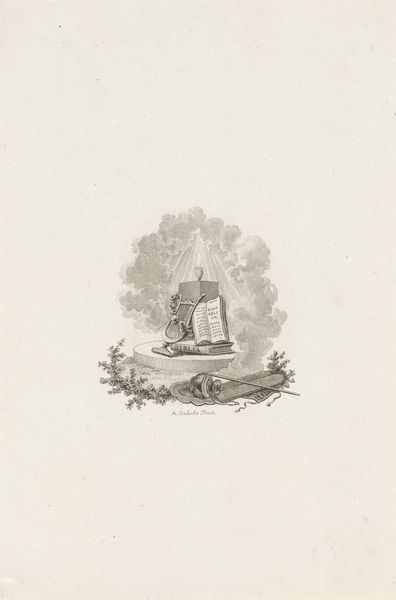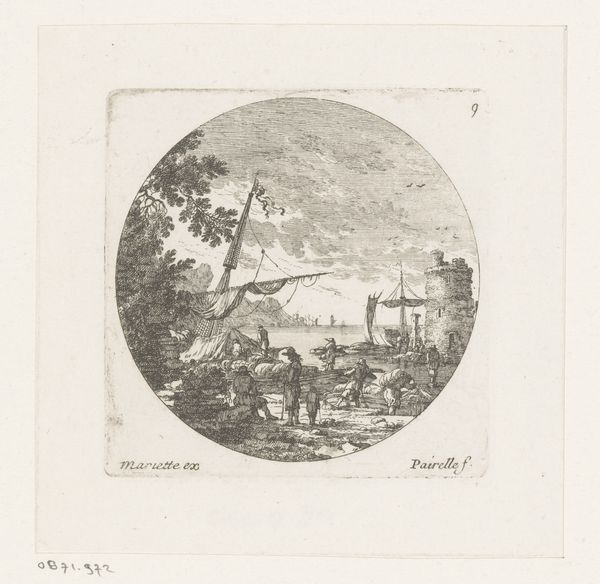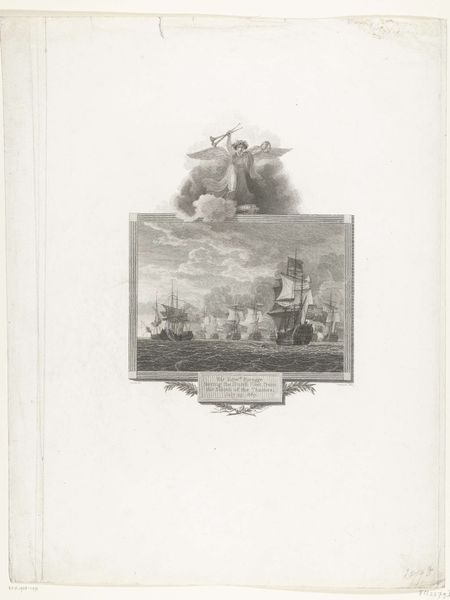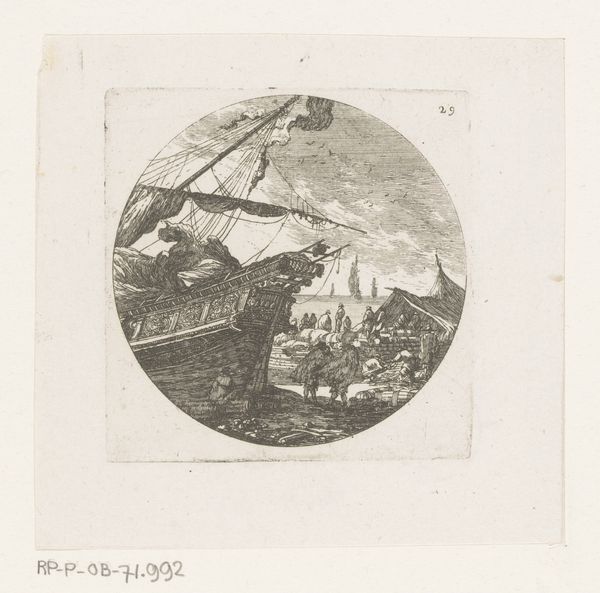
drawing, print, etching, engraving
#
drawing
# print
#
etching
#
decorative-art
#
engraving
Dimensions: overall: 20.3 x 25.4 cm (8 x 10 in.) Original IAD Object: 4 5/8" in diameter
Copyright: National Gallery of Art: CC0 1.0
Editor: Here we have the plate titled "Cadmus Anchored," created around 1936 using etching and engraving techniques. The ship in the center is beautiful, but I’m particularly drawn to the elaborate shell border. What are your thoughts when you see this plate? Curator: The Cadmus ship holds potent symbolic weight. Think of early 20th-century anxieties—colonial legacies, trade routes redefined by burgeoning global conflicts. Is the plate a celebratory souvenir, or does it carry a more ambivalent reflection on maritime power and its impact? The decorative arts often function as quiet barometers of social sentiment, after all. Editor: So, it’s more than just a pretty plate? Curator: Precisely! Look at the framing. Seashells—once precious commodities traded across vast distances—now serve merely as decoration. There's a tension between the romanticized image of the anchored ship and the historical realities of seafaring. It asks a subtle, perhaps unconscious question: What are the true costs of "anchoring," of establishing dominance? Who benefits and who is marginalized? Does the setting of decorative art in particular inform its role in popular imagery? Editor: I see what you mean. The shells seem almost…confining. I had originally seen it as pretty, but now I see it almost as an image representing complex maritime narratives and social structures. Curator: It’s in these layers, between aesthetic appeal and the historical undercurrents, that decorative arts become truly fascinating, acting as a subtle language. Editor: Thanks, that’s given me a lot to think about. Curator: My pleasure. Thinking about the seemingly innocuous everyday items reveals a lot about any period.
Comments
No comments
Be the first to comment and join the conversation on the ultimate creative platform.

